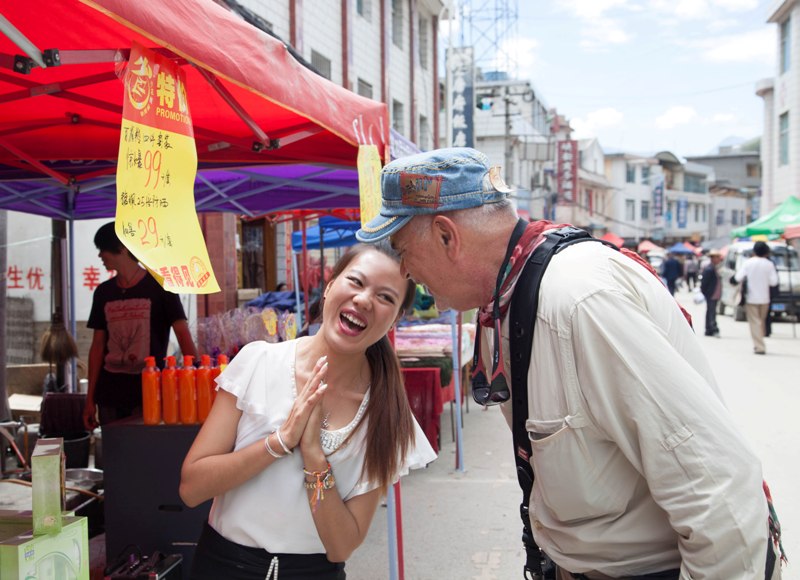Lijiang: Ethnic Minority Markets
On the Road
Yunnan Province
China
June 4, 2014
You ever see a pig on a leash?
You ever see a lady smoke a pipe? Did she have tattoos on her forearm?
Somewhere between Tiger Leaping Gorge and Shaxi, we were lucky enough to pass through a large town with a colorful weekly market in progress.
The ethnic minorities were welcoming and friendly and pleased to pose for a photo.
Many, if not most of the women were dressed in their finest outfits.
Based on the clothing and hats they wore, I can only guess that there were at least two, maybe three or four distinct groups in town that day.
(We also passed through a smaller market in a rural area. I assumed that the population was not accustomed to visitors so I quietly took a few shots and left.)
Since I am neither an ethnographer nor an anthropologist, I rely on guidebooks and the Internet for a detailed explanation.
Ethnic Minorities
The ethnic minorities of China make up only a small proportion of the overall Chinese population, about ten percent. The fifty-five minority groups are distributed extensively throughout different regions of China. The regions where they are most concentrated are Southwest China, Northwest China and Northeast China.
One can find Chinese minorities in Inner Mongolia, Xinjiang, Ningxia, Guangxi, Tibet, Yunnan, Guizhou, Qinghai, Sichuan, Gansu, Hubei, and Hunan Provinces. The greatest number of minorities can be found in Yunnan Province (25 ethnic groups).
The residences of the ethnic minorities are various and characteristic; their clothes are colorful and distinctive; some of them have their own languages and writing. They celebrate varied and colorful festivals. The most famous ones include the Torch Festival of Yi Nationality, the March Fair of Bai Nationality, the Water-splashing Festival of Dai Nationality *, the Zongge Festival of Jingpo Nationality and the Knife Pole Festival of Lisu Nationality.
The ethnic minorities in Yunnan make up about one third of the province's population. Many of the minorities exceed populations of 5,000. The largest groups number in the tens of thousands. These ethnic minorities live together over vast areas in the region while some live in individual concentrated communities in small areas.
*The Dai group in China is closely related to the majority Thai population of Thailand. If my luck prevails, I will cross paths with a Dai community as well. I wonder if the women also smoke pipes.

